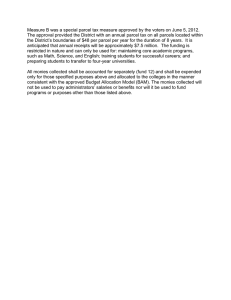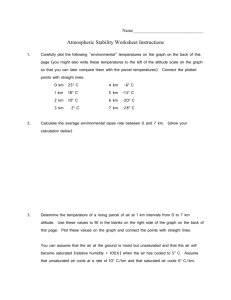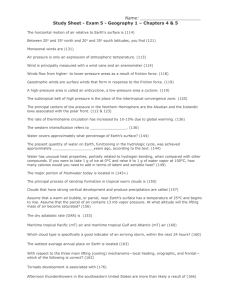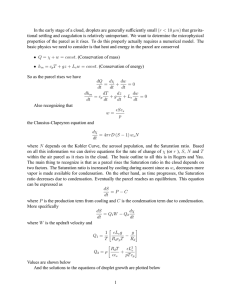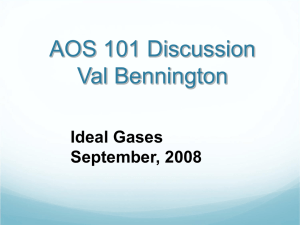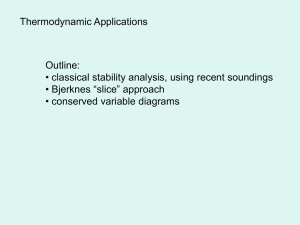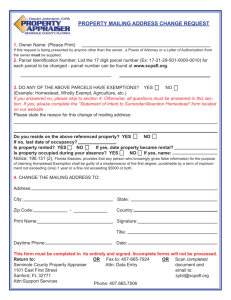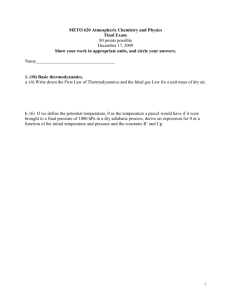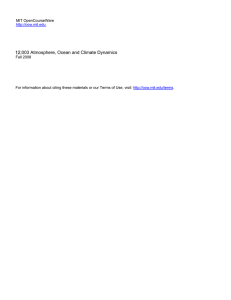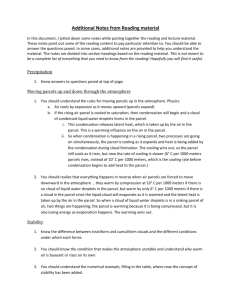Homework 5
advertisement
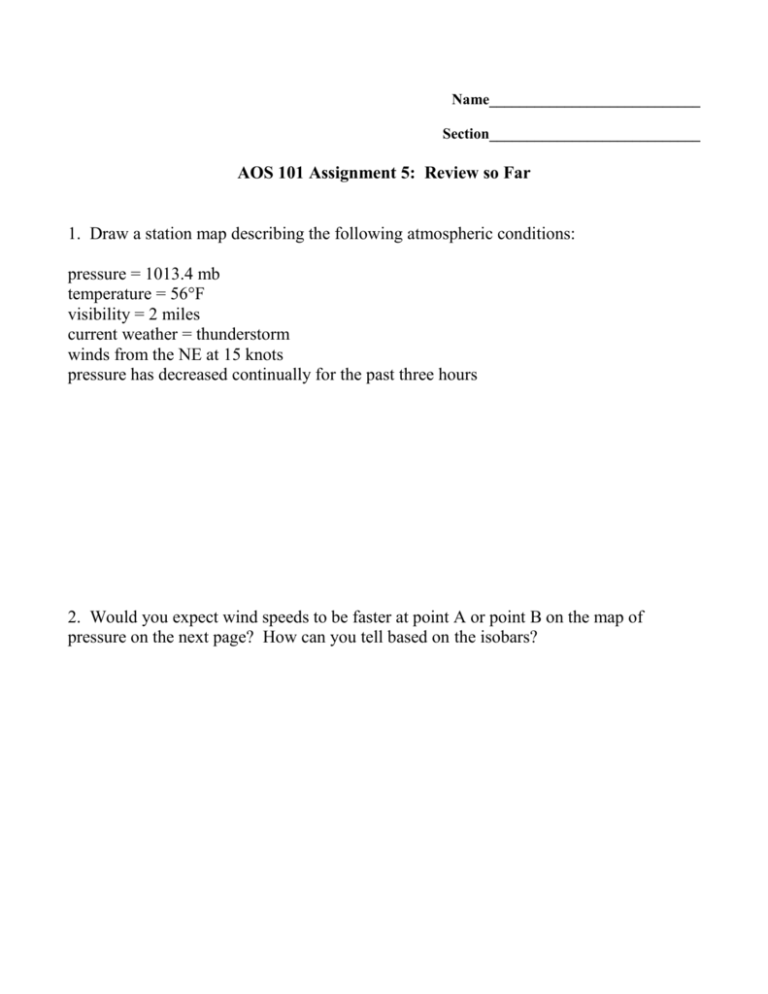
Name____________________________ Section____________________________ AOS 101 Assignment 5: Review so Far 1. Draw a station map describing the following atmospheric conditions: pressure = 1013.4 mb temperature = 56°F visibility = 2 miles current weather = thunderstorm winds from the NE at 15 knots pressure has decreased continually for the past three hours 2. Would you expect wind speeds to be faster at point A or point B on the map of pressure on the next page? How can you tell based on the isobars? 3. Which way are the winds blowing at point C on above map? (Make sure to specify toward or from) 4. An air parcel has an initial temperature of 22°C at the surface of the earth. The environment has a temperature of 18°C at the surface. Is the parcel less dense/more dense/same density as the surrounding air? Is it buoyant? Will it lift from the surface? 5. An air parcel has a temperature of 18°C and a dewpoint of 13°C. It is forced up over a small mountain. At what altitude will it become saturated? (answer should be in meters; 1000 meters = 1km) (Show ALL work) 6. Why do saturated air parcels cool LESS per km than unsaturated air parcels during an ascent? 7. Put the corresponding letter to each definition. ______ Transfers heat between touching objects of different temperature. _______ All objects with a temperature above 0K emit this type of energy at all times. ______ Winds bring in air of a different temperature, changing local temps ______ Air is warmed from below and mixes upward, warming the air aloft. ______ This heat is released when water vapor condenses. A. convection B. conduction C. latent heat D. advection E. radiation 8. If the environment cools more rapidly with height than an unsaturated air parcel, the environmental lapse rate and the environment must be: a. b. c. d. greater than 10°C/km and good for cloud formation less than 10°C/km and good for cloud formation greater than 10°C/km and bad for cloud formation less than 10°C/km and bad for cloud formation 9. As an air parcel rises, how does its pressure change? Why is this always true? 10. How does this change in pressure alter the volume of the parcel? How about its density?
